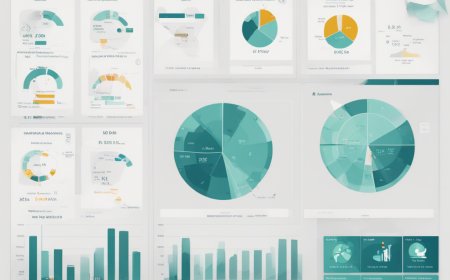Research Sampling Methods Explained: Why We Need Them in Everyday Life
Discover the importance of research sampling methods and how they impact our daily lives. Learn about the different types of sampling and their applications.

Introduction
Every day, we are bombarded with various statistics, polls, and research findings that influence our decisions and shape our understanding of the world. How are these numbers and percentages derived? The answer lies in research sampling methods. This article will explain what research sampling methods are, why we need them, and the different types of sampling techniques used in research.
What are Research Sampling Methods?
Research sampling methods are techniques used by researchers to select a subset of individuals or elements from a larger population to study. By analyzing this smaller group, researchers can draw conclusions and make generalizations about the entire population. The key to effective sampling is selecting a representative sample that accurately reflects the characteristics of the larger population.
Why Do We Need Research Sampling Methods?
-
Efficiency: Sampling allows researchers to study a smaller subset of the population, making the research process more manageable and cost-effective. Studying the entire population is often impossible, time-consuming, and expensive.
-
Reliability: A well-designed sample can provide reliable and accurate results. By selecting a representative sample, researchers can minimize errors and obtain insights that reflect the overall population's characteristics.
-
Feasibility: In some cases, it may be unethical or impractical to study the entire population. Sampling allows researchers to gather valuable information while respecting ethical concerns and practical limitations.
-
Generalizability: Sampling enables researchers to make generalizations about the larger population. By studying a representative sample, researchers can apply their findings to the entire population with a certain level of confidence.
Types of Sampling Methods
There are two primary categories of sampling methods: probability and non-probability sampling.
- Probability Sampling
In probability sampling, every member of the population has a known and equal chance of being selected for the sample. This sampling method is considered the most accurate and reliable because it minimizes selection bias. There are several types of probability sampling:
A. Simple Random Sampling: Every member of the population has an equal chance of being selected. This method is easy to implement, but it may not always produce a representative sample.
B. Systematic Sampling: Researchers select a random starting point and then choose every nth member of the population. This method ensures an evenly distributed sample but may be susceptible to periodic patterns within the population.
C. Stratified Sampling: The population is divided into subgroups, or strata, based on relevant characteristics (e.g., age, gender, income). Researchers then randomly select individuals from each stratum to create a representative sample.
D. Cluster Sampling: The population is divided into clusters, which are then randomly selected for study. This method is useful when the population is spread out over a large geographic area.
- Non-Probability Sampling
Non-probability sampling methods do not guarantee that every member of the population has an equal chance of being selected. While these methods are easier and less expensive to implement, they may result in biased samples and less reliable results. Some common types of non-probability sampling include:
A. Convenience Sampling: Researchers select participants based on their availability, accessibility, and willingness to participate. This method is easy to implement but may result in a biased sample.
B. Quota Sampling: Researchers select participants based on pre-determined quotas that reflect the population's characteristics. This method helps ensure a representative sample but may still be subject to selection bias.
C. Snowball Sampling: Researchers start with a small group of participants and ask them to refer others who meet the study's criteria. This method is useful for studying hard-to-reach populations but may result in biased samples.
D. Purposive Sampling: Researchers deliberately choose participants based on specific characteristics or criteria related to the research question. This method can provide valuable insights but is susceptible to researcher bias.
Conclusion
Research sampling methods are crucial for obtaining accurate and reliable insights about the larger population. By understanding the different types of sampling techniques and their applications, we can better interpret the statistics and research findings that impact our daily lives. When done correctly, sampling methods allow researchers to gather valuable information efficiently, ethically, and feasibly, ultimately enhancing our understanding of the world around us. Sampling techniques could be complex to apply manually, therefore, cloud solutions like ZdataCLoud can help you set up your sampling method in no time.
Disclaimer: The image(s) featured in this article are for illustrative purposes only and may not directly depict the specific concepts, situations, or individuals discussed in the content. Their purpose is to enhance the reader's understanding and visual experience. Please do not interpret the images as literal representations of the topics addressed.
What's Your Reaction?












































































































